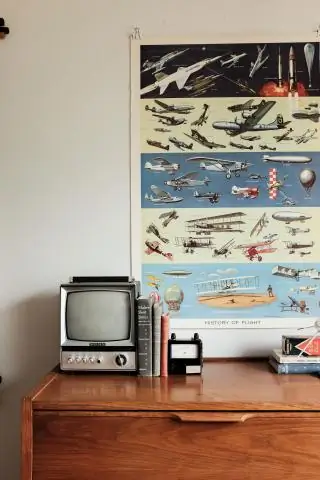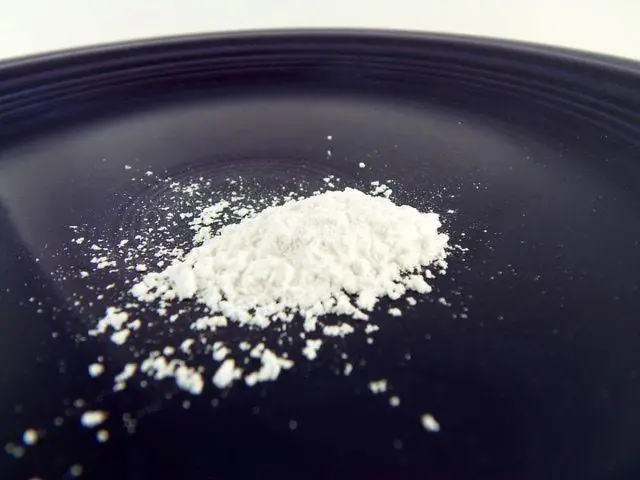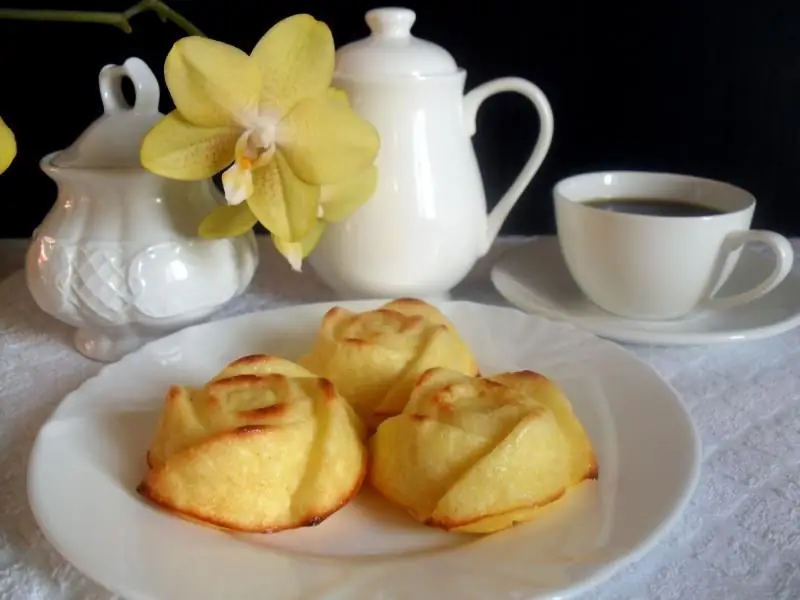
Table of contents:
- Author Bailey Albertson [email protected].
- Public 2023-12-17 12:53.
- Last modified 2025-06-01 07:32.
We hang a picture on the wall: simple ways without nails and drilling

Pictures are the best way to revive the interior, give it originality, exclusivity and comfort. But many owners are confused by the need to make holes in the wall under the frame, so they refuse the opportunity to decorate the room with such an accessory. And we offer you several ways to hang a picture on the wall without nails.
Content
- 1 Double sided tape
-
2 Tools at hand
2.1 We fix the picture "for centuries"
-
3 Glued hook and spider hook
3.1 Video: using the spider hook
-
4 Modern fastening systems
4.1 Video: modern fastening systems in action
-
5 A few more successful ways
- 5.1 Original rail
- 5.2 Picture board
- 5.3 Aesthetic option - decorative satin ribbon
Double sided tape
This is the easiest way to hang a painting on the wall without drilling. True, it is only suitable for light paintings. It is enough to stick a strip of double-sided tape on the surface and fix the image on it.
It will be even better if you glue a few strips on the seamy side of the picture, and, after removing the protective film, fix the picture on the wall. The main condition is that you need to choose an adhesive tape on a fabric basis, it is able to withstand more weight
Double-sided tape is suitable for almost any surface - painted or covered with wallpaper, but only smooth, without structure.
If the tape is very strong, then when the painting is dismantled, the paint will most likely peel off and the wallpaper will peel off. To avoid this, use this secret: you need to remove the tape so that the corner that is already peeled off is at an angle of 90 degrees relative to the wall.

Use double-sided cloth tape
There is also foam double-sided tape. It is much more effective than usual, but does not hold on to textured wallpaper. The place for the picture must first be marked and glued on strips of adhesive tape. After you make sure that they are well pressed against the wall, remove the protective layer and press the painting to this place.
Improvised means
For light paintings, photographs, drawings and posters, simple pushpins and sewing pins are great. The former are easily attached to wallpaper or a painted plasterboard wall. The latter, clinging to the wallpaper, leave a thin, almost invisible hole.
After the picture is removed, you do not have to deal with the consequences: the holes are so small that it will be enough just to wipe them with a dry or slightly damp cloth. And do not forget that such methods will not work for a concrete wall.
Here's another way to secure the painting to the wall. To implement it you will need:
- paper clip in the color of the wallpaper;
- simple pencil;
- stationery knife;
-
glue.

Paperclip, glue, pencil, stationery knife For work you will need: paper clip, glue, pencil, stationery knife
This method is only suitable for walls covered with wallpaper.
-
Choose a place for the picture, mark the length of the paper clip on it with a pencil. Here you need to make a neat cut, and perpendicular to it, in the middle - another smaller one. Spread the edges and use a knife to gently run under them to create a void between the wallpaper and the wall.

Hole in the wallpaper Punch a hole in the wallpaper
-
The paper clip needs to be slightly pushed apart so that it looks like a hook - as if you were holding a thick sheaf of papers together.

Trying on paper clips Insert a paperclip into the hole in the wallpaper to pre-fit the desired position
-
The space between the wallpaper and the wall is filled with a small amount of glue. A paper clip is superimposed on it, the spread edges of the wallpaper are folded into place and pressed. After 24 hours, the glue will dry, and you can hang a picture on such a homemade hook.

Glue application The amount of glue should be sufficient to hold the clip and not smear the wallpaper
We fix the picture "for centuries"
When it comes to hanging a heavier painting for a long time, a type of glue such as liquid nails is used.
The surface of the painting and the walls must be cleaned and degreased. On the perimeter of the seamy side of the picture, drops of liquid nails are applied at a distance of 4-7 cm from each other. If space permits, glue can be applied with a snake. Fix the painting to the wall and wait for the glue to dry. It is best to lean something against the painting, such as a mop, and leave it overnight to be sure.

Use liquid nails for better attachment
The guaranteed shelf life of liquid nails is 1 year, so the painting may need to be glued over time.
Similarly, you can use polymer glue. Its advantages over silicone is that it does not leave greasy marks. Glue the picture around the perimeter, fix it on the wall and prop it up for a while with a stable stick until it dries.
Glued hook and spider hook
To hang a picture weighing 1-1.5 kg, you can take a simple hook without any decorative ornaments. The metal base must be bent so as to ensure its maximum adherence to the wall surface. The hook is applied to the surface and a piece of wallpaper is glued over it. The main thing is to choose the pattern carefully. A picture is hung on the loop remaining on the surface.

Using this scheme, you can make and strengthen the hook
The easiest way is to use a clever spider-crochet you can buy from a hardware store or hardware store. This hook is attached to the wall with its four sharp metal paws.

Spider hook on the wall
It is suitable for all surfaces and easily holds a 2 kg painting. After dismantling, 4 tiny holes remain in the wall, which can be easily removed by rubbing with your finger.
Video: using a spider hook
Modern fastening systems
New items in the field of construction, repair and finishing works appear almost every day, especially in the little things. For example, a ready-made solution for fixing pictures and frames on the wall without using nails - the Command system. These are special Velcro just for such purposes that they will not ruin the wall and leave no marks on it. The main requirement is a flat surface, not covered with textured wallpaper.

Command mounting system helps you position paintings on the wall quickly and easily
The Command system is sold with:
- small, 4 sets of 8 small strips, 1 Velcro can withstand 100 g, a set - 450 g;
- medium, 3 sets of 6 strips, 1 Velcro can withstand 400 g, set - 1 kg.
Installation of such a system is very simple and takes seconds. One part of the Velcro must be glued to the picture, the other to the wall. These parts are connected to each other, and thus the painting is securely attached to the wall.
With such an attachment, the picture has no chance of falling. If you need to move it to another place over time, simply remove the white strip from the system to dismantle it
Video: modern fastening systems in action
A few more successful ways
If you want something unusual in your room, follow these tips. Some of them are not so easy, but the result is worth the time and effort.
Original rail
This design has nothing to do with railway rails, but just a little resembles them externally and by purpose in everyday life. It consists of a basic element, which can be used as a rail made of an old curtain rod, and nylon threads. The main item can also be purchased separately from the hardware store.

On such a structure, you can hang several paintings in different order.
Nylon threads of the required length are attached to the movable hooks inside the rails. Any devices are attached to their ends that can hold the picture in weight. The main advantage of this design is that you can easily change the number of paintings in a row and even adjust their height at will, whenever you want.
Board for pictures
A bold solution that is perfect for young, energetic people who love original, non-standard solutions. In this way, it is preferable to place images showing a sequence or a cycle.
In this case, the board should contrast with the main color in the interior. It can be placed vertically or horizontally, but not close to the wall, but a few centimeters from it, securing it with brackets at the top and bottom.
Pictures on such a board can be fixed in any way without fear for the safety of the wall.
Aesthetic option - decorative satin ribbon
This idea is suitable for those who like non-standard solutions. The tape folds in half and is attached to the wall. For fastening, a decorative nail with a wide head is suitable, or, in our case, the Command system. Two hooks are attached to the frames of the picture, which will provide fastening with ribbons.

Attaching paintings on a satin ribbon
Depending on how many paintings will be involved in the composition, the length and density of the tape are selected.
It turns out that it is so easy - to fix the picture on the wall without the help of nails and screws, without damaging the surface. We hope our tips will help you transform your home using your imagination and creativity. If you have any questions on this topic, please ask them in the comments, or tell us in what ways you hang pictures. Good luck!
Recommended:
How To Wipe Off The Glue From The Adhesive Tape - Remove Traces Of Ordinary, Double-sided, Painting From Plastic, Furniture, Glass, Clothes And Other Surfaces + Photos And Videos

Everyone uses scotch tape, and sometimes unpleasant traces remain after it. How to wipe off adhesive from plain or double-sided plastic, furniture, glass or clothing
How To Make Yogurt At Home - Recipes For Making Drinking, Greek And Other Options From Milk (including Goat Milk), In And Without A Yogurt Maker, Video And Reviews

Properties and types of yoghurts. How to choose products. Homemade recipes in a yogurt maker and without
How To Make A Slime At Home With Your Own Hands - Without Sodium Tetraborate And Glue, From Hand Cream, Shaving Foam And Other Ingredients, Recipes With Photos And Videos

Is it possible to make a slime at home. Types of slimes and recipes for their manufacture, depending on the desired properties. Toy care features
How To Replace Baking Powder For Dough In Baking: Slaked Soda And Other Options For Cake, Biscuit And Other Products + Photos And Videos

How to make lush baking can be done without baking powder at home. What to replace. Useful Tips
Cheesecakes In The Oven: Step By Step Recipes With Photos, With And Without Semolina, Dietary And Other Options

How to cook cheesecakes in the oven. Step by step recipes with different additional ingredients. How to cook the famous Lviv cheesecake
